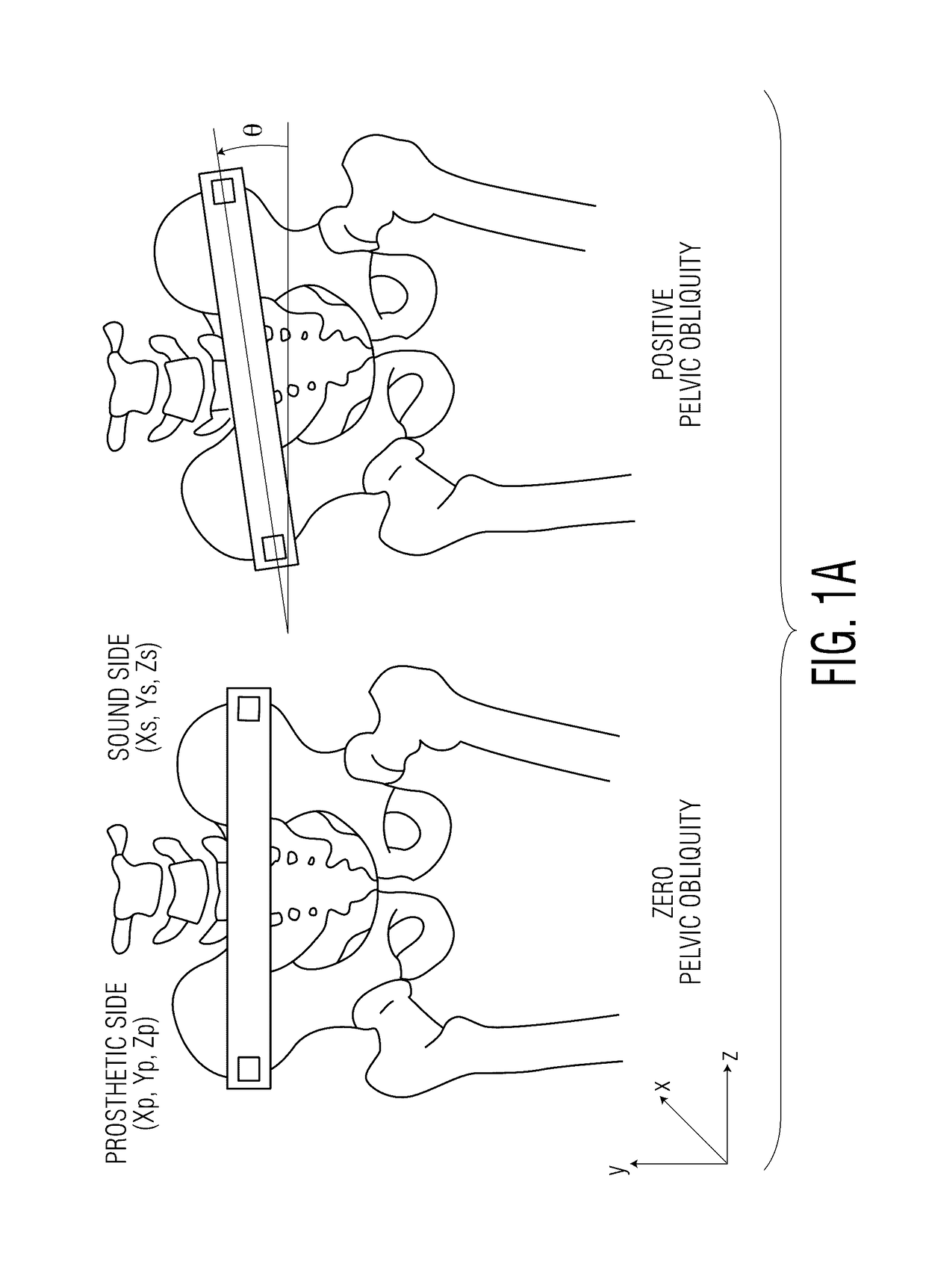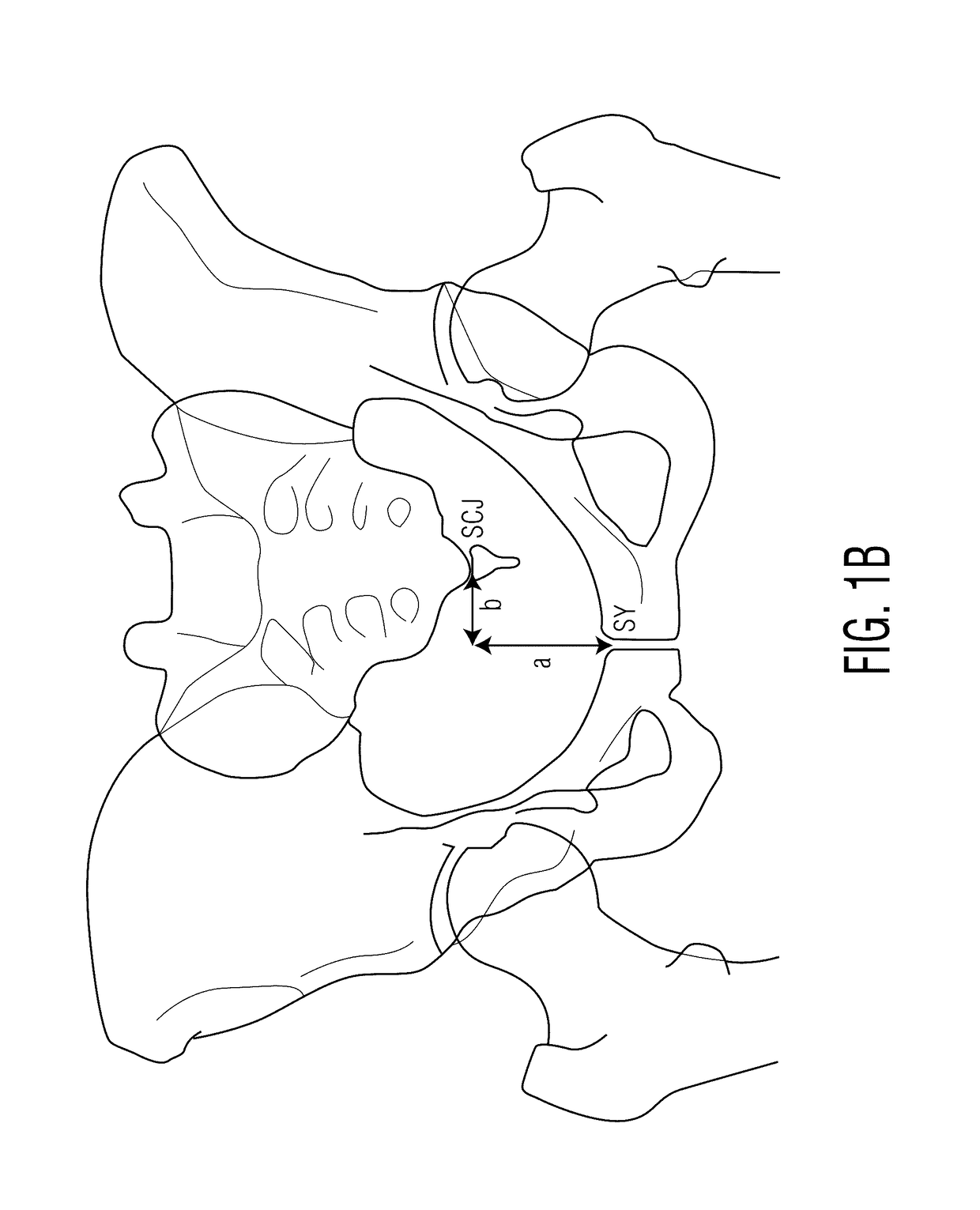Method for aligning an acetabular cup
a technology of acetabular cup and acetabular slit, which is applied in the direction of prosthesis, joint implants, applications, etc., can solve the problems of excessive wear and failure of components, permanent dislocation of the head, and excessive wear of liner parts
- Summary
- Abstract
- Description
- Claims
- Application Information
AI Technical Summary
Benefits of technology
Problems solved by technology
Method used
Image
Examples
example 1
[0078]This example shows how the cup impactor is positioned relative to reference bar 40 to obtain the desired inclination and anteversion. The pelvis is shown in a perfect orientation similar to FIG. 8D.
[0079]Referring to FIGS. 9 and 9A there is shown a “perfect” pelvic orientation on table 46. Also shown is the acetabular cup impactor 54 with shaft 56 shown at a 45° inclination 0° anteversion and zero tilt, rotation and obliquity with respect to reamer or impactor 57.
[0080]As shown in FIGS. 9 and 9A pelvis 10 did not alter position from the A / P image (pelvis in a perfect position) when placed on table 46. The basic pelvis orientation is exactly 90° to the standing x-ray. The plane is normal to the table. This is shown by the 0° alignment between the planes of the two x-rays (pre-standing and intraoperative prone). The plane that the standing x-ray was taken at is shown with the line 59 of FIG. 9. The plane through line 59 is normal to the table. The impactor is placed in the reame...
example 2
[0082]Referring to FIGS. 10A and 10B, similar “perfect” pelvic orientation on the OR table as with Example 1. Standing x-ray plane is normal to the table shown with acetabular cup impactor at a now desired 45° inclination (FIG. 10A) and 20° anteversion (FIG. 10B). The cup impactor 54 would be oriented 45° from the reference bar 40 and 20° off the reference bar 40. The two navigation trackers 50, 52, one of the reference bar, and one on the impactor helps facilitate finding these angles for the impactor. The orientation is now 45 DEG INCLINATION, 20 ANTEVERSION, 0 TILT, 0 ROTATION and 0 OBLIQUITY.
example 3
[0083]Here the cup impactor orientation is 45° INCLINATION, 20° ANTEVERSION, AND THE PELVIC ORIENTATION IS 10° TILT (to be confirmed below), 0° ROTATION and 0° OBLIQUITY. Dimensions for calculations for determining amount of tilt are pre-op images are shown in FIGS. 11, 11A and 11B. Intra-op image: A / P image shown in FIG. 11A: May have tilt. This is to be verified by the calculation outlined below. A Pre-op A / P, preferably standing image is taken and shown in FIG. 11. An Intra-operative A / P image is taken and shown in FIG. 11A. The 3.179 dimension between points 24 and 35 is compared to the pre-op dimension of 2.599 between points 24 and 49. Since the 3.179 is greater than 2.599, it indicates that the pelvis has tilted forward (positive tilt) by a certain amount. Dimensions for calculations for determining amount of tilt: A pre-operative lateral image is shown in FIG. 11B with lengths B, C, and E and angle D.
[0084]Table 1 refers to the dimensions of FIGS. 11A and 11B.
[0085]
TABLE 1Le...
PUM
 Login to View More
Login to View More Abstract
Description
Claims
Application Information
 Login to View More
Login to View More - R&D
- Intellectual Property
- Life Sciences
- Materials
- Tech Scout
- Unparalleled Data Quality
- Higher Quality Content
- 60% Fewer Hallucinations
Browse by: Latest US Patents, China's latest patents, Technical Efficacy Thesaurus, Application Domain, Technology Topic, Popular Technical Reports.
© 2025 PatSnap. All rights reserved.Legal|Privacy policy|Modern Slavery Act Transparency Statement|Sitemap|About US| Contact US: help@patsnap.com



